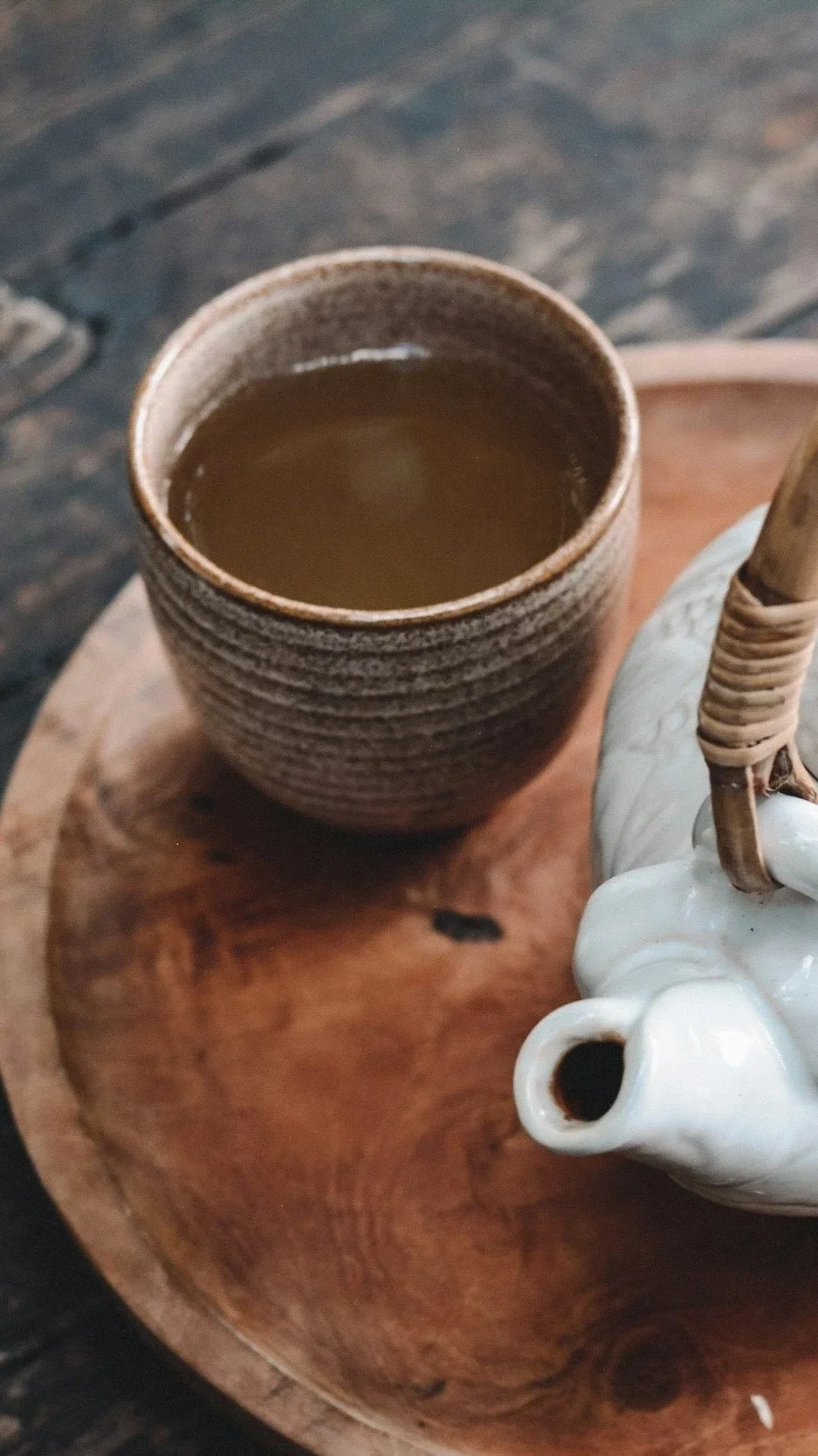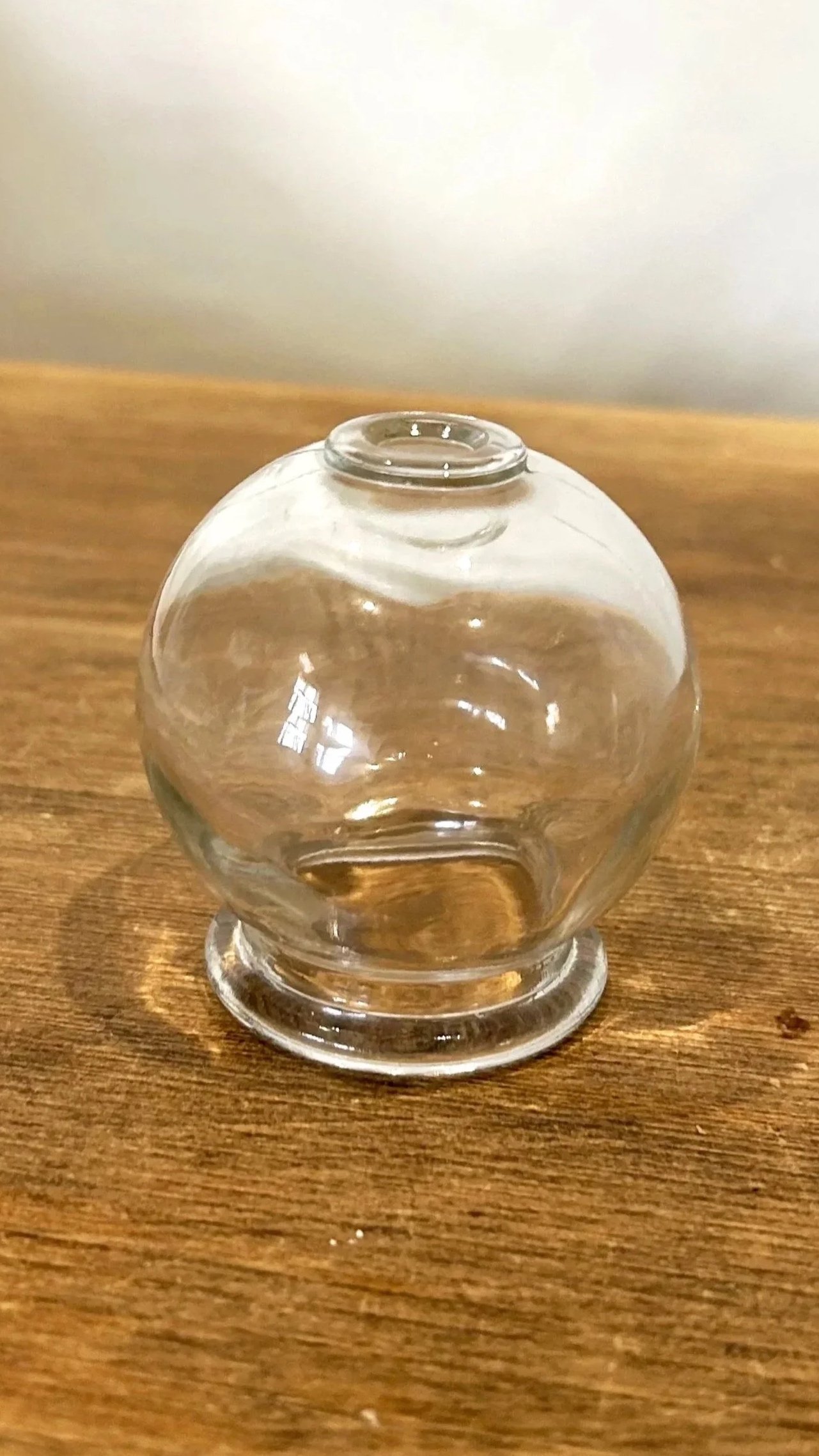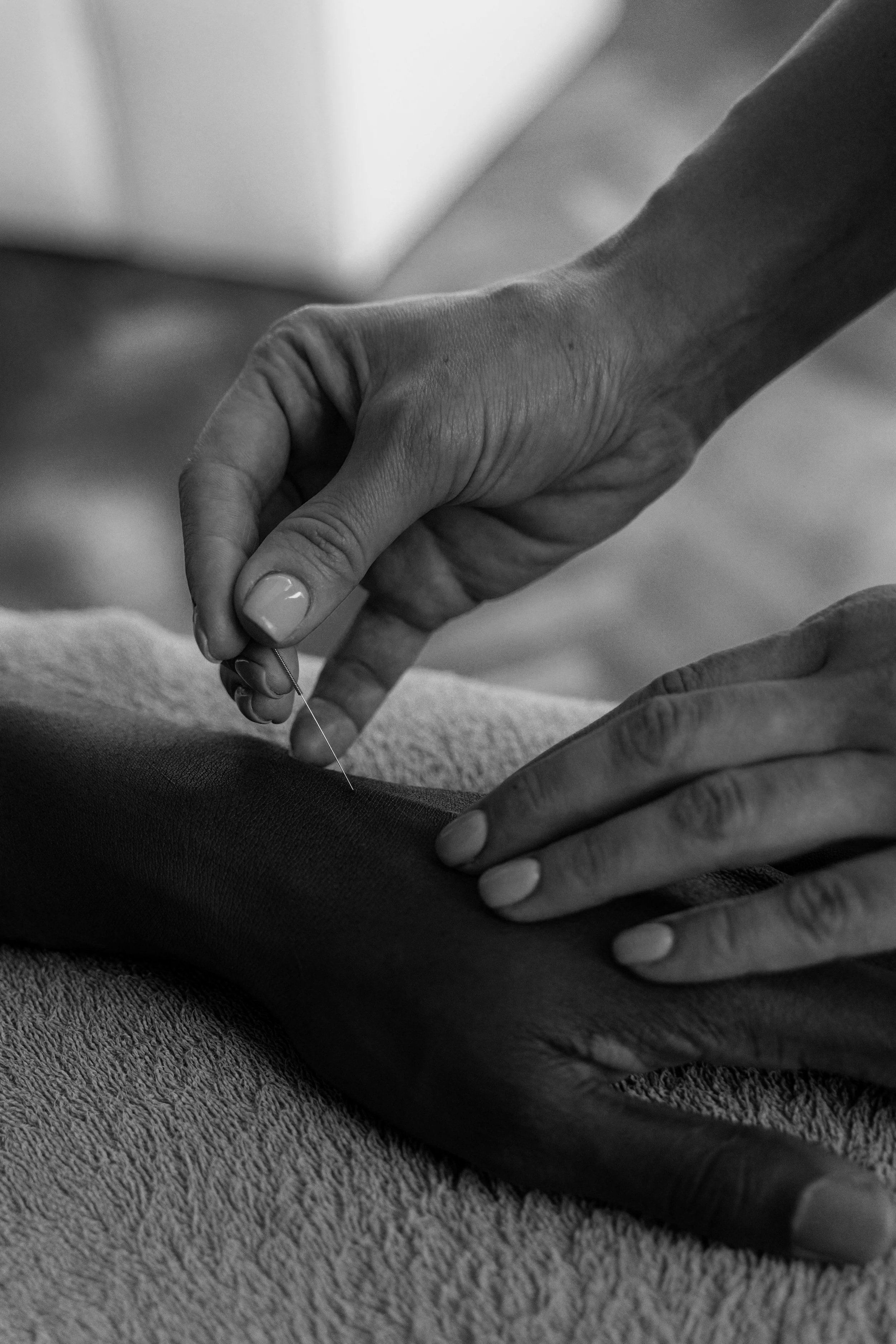
About Emma Hart Acupuncture
Hello, I’m Emma (she/her), a licensed acupuncturist practising Traditional Acupuncture in the beautiful village of Ketton.
I tried acupuncture for the first time in 2018 and became deeply drawn to its wisdom and clinical effectiveness. I founded Emma Hart Acupuncture in 2025 following four intensive years of training in Traditional Acupuncture and Chinese medicine.
Chinese medicine provides a clinically informed, person-centred approach to health. It understands wellbeing as a balance between physical, emotional, and environmental factors, and works with the body’s natural capacity for regulation and repair. This integrated perspective supports sustainable, long-term improvements in overall health.
I’m committed to creating an inclusive, welcoming space for everyone - especially those who may have felt overlooked or excluded in typical healthcare settings.
My clinical interests include supporting people with emotional balance, regulating menstrual or menopausal symptoms, and aiding better digestive health.
Emma Hart | Lic.Ac
Member of the British Acupuncture Council

Below explains how acupuncture works, and what current evidence says about its effects on the body.
What is Traditional Acupuncture?
Traditional acupuncture promotes the smooth circulation of breath, blood, and bodily fluids through the body’s internal systems. When this flow is disrupted or diminished, it can contribute to imbalances that may manifest as physical or emotional symptoms, sometimes developing gradually, or even suddenly.
The foundational principles of acupuncture are based on clinical observations recorded over two millennia ago, when Chinese medicine physicians documented how to adjust bodily rhythms, hormonal imbalances, and circulatory patterns. These classical observations continue to inform my practice today.
Acupuncture uses the precise insertion of single-use needles into specific points on the body to stimulate physiological responses and support the body’s capacity to repair itself.
Diagnosis considers symptoms and underlying functional patterns, individual constitution, lifestyle factors, mental health, and environmental influences. These patterns often relate to organ systems, emotional states, seasonal changes, or significant life events. Because it is whole-person medicine, treatment often addresses multiple areas simultaneously for example, pain, digestion, and mood.
Acupuncture is cumulative and works best over a series of sessions to support long-term recovery.
I feel very honoured to learn, share and practice the way of Chinese medicine with you all.
𓆝 𓆟 𓆞
Traditional acupuncture is a whole system of medicine used worldwide, informed by classical theory and contemporary research.
Why Choose Acupuncture?
Acupuncture offers a space to pause - to listen to what the body is communicating and to restore vitality where life has created strain. Rooted in an evolving medical tradition that spans thousands of years, Traditional Acupuncture understands health as a dynamic relationship between mind-body, and environment.
Today, it is widely used to support both physical and emotional wellbeing, from pain management and hormonal health to improving sleep, mood and executive function. Needling communicates with our nervous system allowing for a gentle way to improve digestion, immunity, stroke rehabilitation, respiratory health and recovery from acute or chronic illness.
The National Institute for Health and Care Excellence (NICE) recommends acupuncture for chronic pain, headaches, migraines, and growing evidence supports its role in helping people live well alongside other forms of healthcare.
Each session begins with an in-depth consultation to understand your health story in full. Treatment may include fine needles, moxibustion, cupping, or other traditional techniques that work through the nervous, circulatory, and energetic systems to promote repair and regulation.
Whether you are looking for physical or emotional relief, acupuncture provides a considered and evidence-based approach to whole-person care.
Acupuncture for Women’s Health
I am passionate about supporting the health of everyone who visits my clinic.
For those who menstruate, acupuncture supports hormonal and reproductive health through all major stages of life from menarche to menopause.
It can help ease menstrual pain, PMS, or symptoms linked to PCOS and endometriosis, and offers gentle support for fertility, postnatal recovery, and peri and post-menopausal transitions. Treatment plans can improve circulation, regulate hormonal activity, and calm the nervous system, helping the body find a steadier rhythm over time.
Whether you’re navigating hot flushes, mood changes, pelvic masses, recurrent UTIs or mastitis, acupuncture can help.
Acupuncture for
Chronic or Acute Pain
Pain is often the body’s way of signalling strain or stagnation. Many people try to manage pain with unsuccessful maladaptive coping strategies and turn to acupuncture as a last resort.
Traditional Acupuncture is a safe, non-invasive therapy that helps to reduce inflammation, release muscular tension, and support recovery from injury or long-term conditions such as arthritis, back pain, or fibromyalgia. It’s also used to relieve headaches, migraine with or without aura, and post-operative discomfort.
Through precise stimulation of the nervous system, acupuncture encourages the body’s natural repair processes to help restore movement and comfort.
Acupuncture to improve
Rest, Digestion & Energy
When emotional or physical stress begins to affect sleep, digestion, or energy levels, acupuncture offers a way to encourage vitality.
It supports those experiencing irritability, low mood, mild cognitive impairment, insomnia, or burnout, and can also help regulate digestion and immune function.
By improving circulation and communication between organ systems, traditional acupuncture helps the body process stress more efficiently by nurturing a renewed sense of capacity.
Acupuncture for Cancer Survivorship & Recovery
Acupuncture can offer gentle support during or after cancer treatment. It is often used alongside conventional care to help ease symptoms such as pain, hot flushes, nausea, or fatigue, as well as to support sleep and emotional wellbeing.
Treatments focus on restoring strength after chemotherapy or radiotherapy and helping the body adapt to long-term changes in energy and mood. Many people find acupuncture provides a sense of grounding and support during periods of uncertainty, offering space to rest, recover, and reconnect with themselves.
Acupuncture & Mental Health
Acupuncture offers a regulated, supportive approach for people navigating mental and emotional health challenges. While it is not a replacement for psychological or psychiatric care, it can sit alongside these treatments to help regulate physiological processes involved in stress responses, and cognitive function.
People living with symptoms of anxiety, depression, neurodivergence, bipolar disorder, PTSD, or prolonged grief may experience disrupted sleep, heightened stress reactivity, fatigue, poor concentration, disordered eating or somatic symptoms.
Acupuncture works with the autonomic nervous system, circulation, and neurochemical pathways, supporting the body in restoring more stable internal rhythms.
All appointments include an in-depth consultation to understand how symptoms are presenting, what may be contributing to them, and how they relate to wider patterns within the body. Treatment plans are personalised, and may adapt over time depending on how you respond during periods of change, medication shifts, or emotional triggers.
This approach provides a calm, predictable space for people seeking support in the broader context of their physical, mental and emotional wellbeing.
𓆝 𓆟 𓆞
If you’d like to explore whether acupuncture might be suitable for you, you’re welcome to get in touch or book a consultation.

What Does the Research Say?
While traditional explanations focus on energetic or neural pathways, contemporary research highlights acupuncture’s initial action as mechanical. The gentle insertion of needles stimulates connective tissue and cellular activity, which may explain acupuncture’s efficacy across multiple traditional systems, including Chinese, Korean, and Japanese approaches.
Functional MRI studies show that stimulating specific acupuncture points can activate correlating areas of the brain. For example, vision-related points have been linked with activity in the visual cortex. Research suggests that acupuncture can influence the autonomic nervous system, reduce inflammation, enhance circulation, and modulate neurochemicals such as endorphins, oxytocin, and serotonin.
Over 2,000 clinical trials on acupuncture have been published to date, exploring its effects across pain, mental health, reproductive health, and neurology.
This evidence supports acupuncture as a safe and effective complementary option for a wide range of people seeking support for chronic or acute conditions relating to their physical or mental health.
The National Institute for Health and Care Excellence (NICE) recommends acupuncture for chronic pain and tension-type headaches or migraines. The evidence base for acupuncture continues to grow, with ongoing research exploring its possibilities. Discover more about acupuncture research.
-
Acupuncture (zhēnjiǔ, 針灸)
針 = needle
灸 = moxibustion
There are many styles of acupuncture. I practice traditional acupuncture which is rooted in Chinese medicine principles that date back 3,000 years.
Acupuncture works by supporting the body’s ability to rebalance and repair itself over time also known as homeostasis.Very fine, single-use needles are placed with care into specific points along the body’s meridians to regulate the nervous system, ease pain, and strengthen the mind-body.
Traditional acupuncture is a whole-body system of medicine which is why it can support most people, of most ages with most ailments. -
Moxibustion (àijǐu, 艾灸)
艾 = mugwort
灸 = moxibustion
Meaning: ‘moxa + combustion’ – the burning of mugwort as a form of heat therapy.
A cigar-shaped stick of mugwort or cone of moxa punk commonly referred to as moxa (artemisia vulgaris) is carefully lit and held near acupuncture points on the body.
The warmth from the moxa gently penetrates into the skin and muscle tissue to disperse any cold or stagnation in the area.
I use moxa a lot for symptoms of pain, menstrual irregularities, digestive discomfort and post-natal support.
Read more here. -
Guasha (guāshā, 刮痧)
刮 gua = to scrape
痧 sha = reddish marks that appear on the skin known as ‘sha’.
Meaning: ‘scraping + sha’.
A smooth-edged tool is gently rubbed or scraped across the skin to ease muscle tension and improve blood flow around areas of stagnation or inflammation. Temporary bruising appears on the skin and can last up to a week.
I use guasha techniques when addressing muscular pain or tension particularly in the jaw, neck or upper back. Patients tend to feel relief after one session. -
Fire Cupping (báhuǒguàn, 拔火罐)
拔 = pull
火 = fire
罐 = jar/cup
Cupping therapy has roots in many cultures, including Ancient Greek, East and South Asian, and North African traditions.
A vacuum is created inside a sterile glass cup by briefly igniting a flame within it, then applying the cup to the skin.
The warmth and suction can move stagnation, relieve muscle tightness, and encourage better circulation. -
Electroacupuncture (diànzhēn, 電針)
電 = electricity
針 = needle
A modern form of acupuncture that combines electrical stimulation with traditional needle placement.
Once needles are inserted into the body, electrodes are attached to the needles passing a gentle, low-voltage electrical pulse between each needle via the body tissue to aid pain relief and muscle recovery.
Electroacupuncture (EA) has been proven effective in addressing chronic reproductive health conditions such as endometriosis and PCOS.
EA can also be effective in managing neuropathic pain and chronic conditions affecting nerves, muscles and joints like fibromyalgia and arthritis. -
Auriculotherapy (ěrzhēn liáofǎ, 耳針療法)
耳 = ear
針 = needle
療法 = therapy
Also known as ‘ear acupuncture’ or ‘auricular’, it’s a subtle and powerful therapy often used to manage symptoms of anxiety, addiction, sleep disorders, and hormonal disregulation.
Auricular acupuncture targets specific points on the ear that are connected to the auricular branch of the Vagus nerve. The Vagus nerve is crucial for maintaining the body’s physiological balance and regulating the autonomic nervous system.
During your appointment I may softly apply needles or after your session stickers known as ear seeds to your outer ear to boost your treatment. -
Infrared Heat Therapy (hóngwàixiàn rèliáo, 紅外線熱療)
紅 = red
外線 = external rays
熱療 = heat therapy
As we lead busy lives in a cold, damp climate, pain (whether systemic or caused by injury) can linger in the body.
When Cold is trapped in our muscles and tissues, it can lead to stagnation and discomfort.
In Traditional Chinese Medicine (TCM), heat therapy is used to expel Cold. A heat lamp is positioned above the body to offer a deep-penetrating warmth that soothes pain by promoting circulation, enhancing tissue repair, and supporting cellular regeneration.This therapy works well alongside acupuncture for menstrual irregularities, digestive disorders, or slow recovery following injury or surgery.
-
Yangsheng (yǎngshēng, 養生 – “nourishing life”)
養 = nourish
生 = life
Yangsheng refers to a set of self-cultivation and lifestyle practices from Daoist and Chinese medical traditions that promote long-term resilience.
During your session, I may offer lifestyle advice drawn from these teachings around ways in which food, movement, and seasonal habits can support your health.
Learn about my practice
To support physical and emotional wellbeing, I sometimes combine acupuncture with gentle adjunct therapies rooted in Eastern medicine like moxibustion, guasha, and cupping.
Training and Accreditations
Undergraduate training
◦ Completed 3,600 hours of degree-level training over four years at the City College of Acupuncture (CCA), studying Chinese medicine and Western medical sciences, including 400+ hours of clinical practice.
Training accreditation
◦ Level 6 Licentiate Diploma in Acupuncture (Lic.Ac), accredited by the British Acupuncture Accreditation Board (BAAB), the highest recognised standard of training in the UK.
Professional Memberships
◦ Voluntarily regulated by the British Acupuncture Council (BAcC), whose register is accredited by the Professional Standards Authority (PSA), ensuring rigorous standards in healthcare and patient safety.









